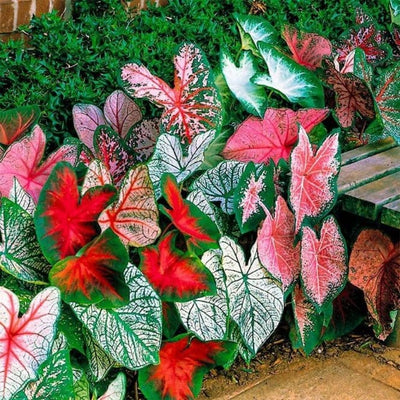Rose of Sharon Plantation Guidelines and Care Tips
 Rose-of-sharon is like a large deciduous shrub. The flower is similar to tropical hibiscus, although the shrub grows faster and is relatively hardy. It also bears a close resemblance to hollyhock flowers, which grow as herbaceous biennials instead of woody shrubs.
Rose-of-sharon is like a large deciduous shrub. The flower is similar to tropical hibiscus, although the shrub grows faster and is relatively hardy. It also bears a close resemblance to hollyhock flowers, which grow as herbaceous biennials instead of woody shrubs.
Size
Rose-of-sharon grows to a height of 15 feet and has a direct growth habit. It is easy to maintain as a six-foot fence. It can also be trained as a small tree on the terrace.
Appearance
The dark green, five-pointed leaves have an attractive gray hue and the colors of Sharon's flowers are white, pink, purple, blue and red, depending on the variety. One of the most attractive things about Sharon roses is its flowering time - the first flowers appear in late summer and continue until autumn, when several plants bloom.
- In the countryside
- It is a good shrub for a difficult area.
Planting tips
Sharon rose is happiest in full sun with fertile soil and regular humidity - but usually survives (and often blooms) in partial shade with hard, undisturbed muddy soil and no water.
- Care and Maintenance
- Rose-of-sharon is a very carefree plant.
How and when to fertilize the rose of Sharon ?
 It will benefit from a weekly watering and will flower more prolifically with an application of Bloom Booster (high phosphorus) fertilizer applied in late summer. Maintain a layer of wood chips or pine straw over the root zone to keep the weeds down and to conserve soil moisture. The most likely maintenance activity needed with rose-of-sharon is to control its growth. It can grow 10 feet from the ground at a time and usually shows itself and produces small seedlings that need to be uprooted.
It will benefit from a weekly watering and will flower more prolifically with an application of Bloom Booster (high phosphorus) fertilizer applied in late summer. Maintain a layer of wood chips or pine straw over the root zone to keep the weeds down and to conserve soil moisture. The most likely maintenance activity needed with rose-of-sharon is to control its growth. It can grow 10 feet from the ground at a time and usually shows itself and produces small seedlings that need to be uprooted.
Pruning
Cut as needed to maintain the desired length. Many gardeners have decided to prune the entire plant within six inches of winter soil, which will result in less growth and larger flowers next year. Rose-of-sharon tends to be leggy, so it's a good idea to trim it well every few years.
Diseases and pests
Aphids, white flies and mildew can appear on rosettes, although this is rarely a serious problem. Aphids and moths can be killed by hard spraying water to remove insects from the infected area, or insecticidal soap can be used to treat serious infections. Mildew is often a sign that the plant does not have sufficient circulation in the sun and wind.
In conclusion
Sharon Rose is an exceptionally strong and fast-growing decomposing shrub. In fact, if the conditions are right, this plant is always green and easy to attack. In less favorable conditions, simple steps should be planted well, ensure good drainage, Light nutrition and protection against strong cold will lead to the successful growth of this beautiful tree. Hibiscus (Sharon Rose) Sharon rose flowers come in a variety of blue, purple, pink, violet, red and white. They are attractive and useful for butterflies, bees and hummingbirds.




Leave a comment